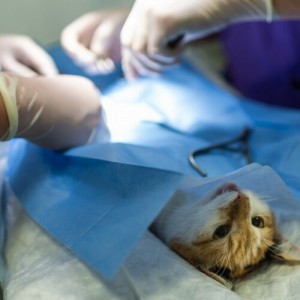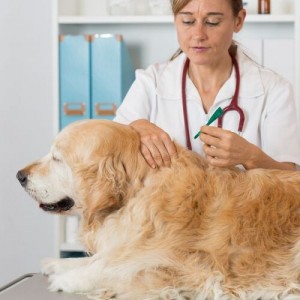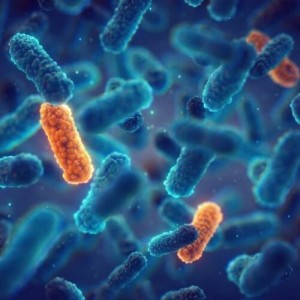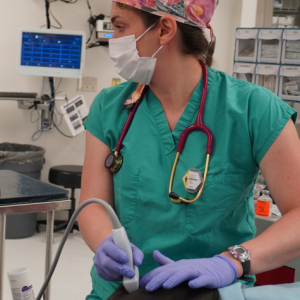Advances in equine dental and sinonasal disorder research
by Jenny Alonge
Diagnosing and treating equine dental-related sinus disease is often challenging, because many cases don’t respond to conservative measures, such as rest, antibiotic therapy, and sinus lavage, and require surgical treatment that may include sinusotomy, dental extraction, or intrasinus growth removal. However, advanced diagnostic imaging techniques, such as standing computed tomography (CT) systems and quality oral endoscopy, allow better visualization of these anatomically complex areas. The veterinary dentistry and oral maxillofacial surgery specialty section of Frontiers in Veterinary Science recently presented 10 peer-reviewed research articles that investigated equine dentistry and sinonasal disorders, to help advance knowledge in this field.
Research using computed tomography to investigate equine dental and sinonasal disorders
CT imaging of the equine head is valuable for evaluating spatially complex anatomic structures, especially when the areas cannot be accessed by endoscopy or ultrasound, and radiographic superimposition makes complete evaluation challenging. Research performed using CT includes:
Sinus bony structure osteitis — Dixon, Puidupin, et al used CT to assess the sinuses in horses with sinonasal disorders, and found significant inflammation in the bones adjacent to the paranasal sinuses, which explains common equine sinusitis signs, such as epiphora, soft tissue facial swelling, and increased maxillary bone radionucleotide uptake. These findings also explain why veterinarians may have difficulty fenestrating the maxillary septal bulla in horses with sinus disease.
Paranasal sinus and nasal conchal bulla involvement — Dixon, Barnett, et al used CT to assess the paranasal sinus compartment and nasal conchal bulla in 300 horses with sinonasal disease. They found that the more dependent sinus compartments were most commonly involved in sinus disorders, and that many horses with sinus disease also have nasal conchal bullae involvement.
Idiopathic primary sino-nasal obstruction — Miniature horses can develop sinonasal drainage obstruction, possibly caused by sinonasal developmental distortion, that results in mucus accumulation. Vlaminck, Polaris, et al used CT to diagnose seven cases in young American miniature horses and miniature Shetland ponies who were treated successfully with a nasofrontal osteotomy to fenestrate the dorsal conchal sinus into the nasal cavity, followed by temporarily catheterizing the sino-nasal fistula to maintain patency.
Age-related changes — Liuti, Daniel, et al used CT to examine the rostral and caudal mandibular and maxillary equine cheek teeth in horses of different ages, with the goal of evaluating the angulation and age-related dental drift. The study showed a much higher angulation in the mandibular versus the maxillary teeth, and in the third molar versus the second premolar. Tooth angulation did not decrease with age in most cases, while all teeth drifted mesially with age.
Equine temporomandibular joint — Veterinarians have often debated the presence and frequency of communication between the synovial compartments in the equine temporomandibular joint. Pimental and Carmalt used CT imaging and contrast media injection on 20 equine cadaver heads to investigate this communication, identifying no physiological communication between compartments, although two joints had an acquired communication.
Research involving non-traumatic equine cheek teeth fractures
Most equine cheek teeth fractures occur without evidence of trauma. Fracture sites can become food filled, and mobile dental fragments can damage soft tissue structures. Research investigating these fractures included:
Fracture resistance — Pollaris, Broeckx, et al performed an ex vivo study to assess whether a fissure fracture’s presence would influence gross fracture development when mechanical pressure was applied to the occlusal surface. They found that when a fissure was present, fracture resistance was reduced.
Occlusal fissures — Pollaris, Broeckx, et al performed a three-year in vivo study involving 36 horses with cheek teeth fissure fractures to assess long-term changes in these teeth. They found that gross fractures were more likely when a fissure fracture was present.
Idiopathic and infundibular caries-related cheek teeth fractures — Dixon, Kennedy, et al studied 300 horses with 486 non-traumatic gross cheek teeth fractures and found that the maxillary teeth were most commonly affected, and typically involved first and second pulp horn slab fractures and caries-related infundibular fractures.
Miscellaneous equine dental and sinonasal research
Other studies included:
Equine mandibular cheek tooth extraction complications — In a retrospective study, Gergeleit and Bienert-Ziet looked at horses following mandibular cheek tooth extractions and found that post-extraction complications occurred in 6.6% of the 302 extractions. Alveolar sequestration was the most common complication, and others included post-extraction mandibular fistula formation and mandibular abscessation.
Equine cheek teeth infundibula — Pearce and Brooks studied the long-term clinical and oral endoscopic outcomes in horses undergoing infundibular caries treatment. They concluded that equine infundibular restoration using human dentistry materials is a safe, long-lasting treatment and prevents further pathological changes.
Equine dental and sinonasal diseases cause significant health issues for affected horses, and more research is needed to understand the area’s complex anatomy and the specific disease processes. The increasing availability of standing CT systems, and the growing number of board-certified equine dentistry specialists, will hopefully increase research in this area and improve the ability to care for affected horses.
About the author
Jenny Alonge received her Doctor of Veterinary Medicine degree from Mississippi State University in 2002. She subsequently completed an equine medicine and surgery internship at Louisiana State University. After the internship, she joined an equine ambulatory service in northern Virginia where she practiced for almost 17 years. In 2020, Jenny decided to make a career change in favor of more creative pursuits and accepted a job as a veterinary copywriter for Rumpus Writing and Editing in April 2021. She adopted two unruly kittens, Olive and Pops, in February 2022.








List
Add
Please enter a comment